
Soil Associations
0511e SWAFFHAM PRIOR
Soil and site characteristics
Well drained calcareous coarse and fine loamy soils over chalk rubble. Some similar shallow soils. Deep non-calcareous loamy soils in places. Striped and polygonal soil patterns locally. Slight risk of water erosion.
Geology
Chalky drift and chalk
Cropping and Land Use
Cereals, sugar beet and potatoes.
Component soil series
| Subgroup | Series name | Percentage | WRB 2006 link |
|---|---|---|---|
| 5.11 | SWAFFHAM PRIOR | 30% | Calcaric Endoleptic Cambisols |
| 5.11 | SOHAM | 25% | Calcaric Endoskeletic Cambisols |
| 5.71 | MOULTON | 15% | Chromic Luvisols |
| 3.43 | NEWMARKET | 10% | Calcaric Leptosols |
| 3.43 | RUDHAM | 5% | Calcaric Brunic Leptosols |
Covers 693 km2 in England and Wales
Soilscapes Classification
| 5 |
Freely draining lime-rich loamy soils |
0511e SWAFFHAM PRIOR
Detailed Description
Swaffham Prior association consists of Swaffham Prior and Soham series, respectively coarse loamy and fine loamy typical brown calcareous earths over chalk or rubbly chalky drift. Associated soils include the coarse loamy Newmarket and fine loamy Rudham series, both brown rendzinas, and fine loamy Moulton soils, which belong to the typical argillic brown earths. Upton, Andover, Coombe, Block, Cannamore, Panton and Bolingbroke soils also occur. The soils are mostly well drained and contain chalk and flint stones; there is much variation in soil thickness and it is commonly difficult to distinguish chalky rubble below from chalk. The association is extensive on gently rolling land between 15-140 m O.D. in Humberside and Lincolnshire, and also in Cambridgeshire and Hertfordshire and adjacent counties.
There is wide variation in the proprtion of Swaffham Prior and Soham series, depending on the proximity of sandy deposits. For example, coarse loamy Swaffham Prior series predominates in Cambridgeshire south and west of Breckland. Similarly in Humberside and north Lincolnshire coarse loamy Swaffham Prior soils are dominant because blown sand is mixed into the soils, but these soils are rare in central Lincolnshire.
IIn Cambridgeshire and north Hertfordshire the association is on gently undulating land between the Chalk Marl and the chalky till capping the highest ground. Polygonal and striped soil patterns, of periglacial origin, are common, and are most obvious on air photographs of bare or cropped ground. In Cambridgeshire it is known as the Redlands because it contrasts with adjacent greyer soils on the Chalk, mainly rendzinas. Upton soils are present on valley sides, and Moulton soils occur on some valley floors and locally elsewhere in striped patterns. South and west of Baldock, Soham series replaces Swaffham Prior series as the main soil, and on the floors and sides of valleys and windgaps in the chalk escarpment Coombe and Panton soils are locally dominant.
IIn central Lincolnshire the substrate is a compact very chalky till, the Calcethorpe Till, and Soham or the very similar Panton series is the most important soil locally. Rudham and to a lesser extent Newmarket soils are common, while Moulton soils are rare. Of the minor associates Upton and Andover series are very rare, but grey rendzinas of the Bolinbroke series are included, especially near Spilsby. In areas where the Calcethorpe till thins out over clayey Cretaceous beds, or passes to a less permeable chalky till, the Wragby Till, Block and Cannamore soils occur. In north Lincolnshire on the Chalk, where the association extends to some of the highest parts of the Wolds, it is dominated by Swaffham Prior series. Moulton soils are a common associate and Upton and Andover series are minor inclusions.
In Humberside, the association occurs on the Wolds south of Market Weighton where it is dominated by Swaffham Prior series, but Moulton soils are a common associate and Upton and Andover series are minor inclusions.
Soil Water Regime
The soils and substrates are permeable and well drained (Wetness Class I), and readily absorb winter rainfall. In Cambridgeshire, for example at Whittlesford which has 575 mm of rainfall annually, Swaffham Prior, Soham and Moulton soils are slightly to moderately droughty for all crops except grass, for which they are very droughty. In Lincolnshire, with a moister climate (Horncastle 700 mm annual rainfall) the soils are slightly droughty for arable crops and moderately droughty for grass.
Cropping and Land Use
The soils are very easy to cultivate and there are adequate days for spring and autumn cultivation. Yields from direct drilled autumn- and spring-sown crops are similar to those from conventional techniques. Arable crops including winter and spring cereals, sugar beet, potatoes, peas and beans are grown. Grassland is of limited extent especially in the south of the region. In Lincolnshire, the soils are slightly droughty for grass but elsewhere increased droughtiness restricts yields. There is little risk of poaching.
0511e SWAFFHAM PRIOR
Distribution Map
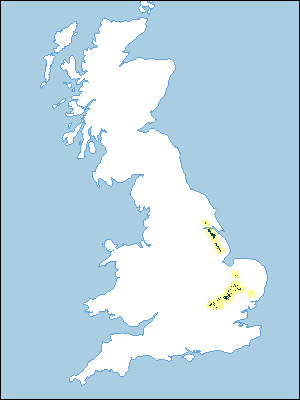 |
Note that the yellow shading represents a buffer to highlight the location of very small areas of the association.
Keys to component soil series
Eastern Region
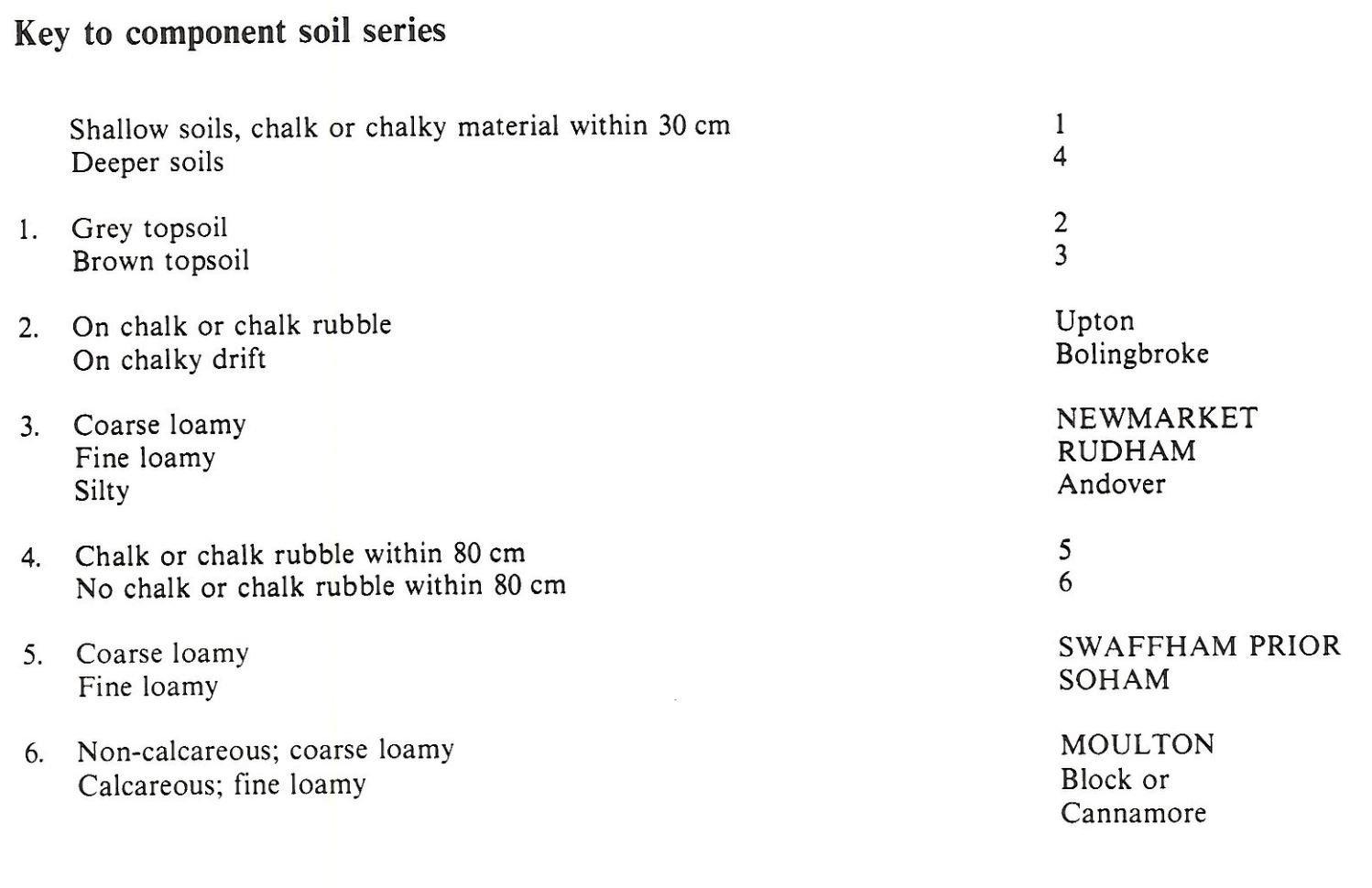 |
Northern Region
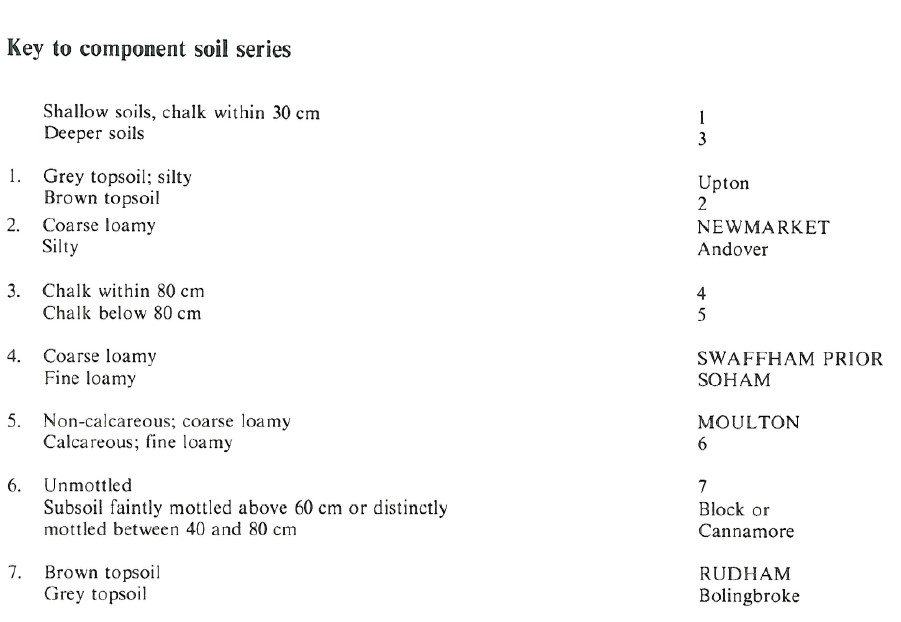 |
Typical Landscapes
Eastern Region
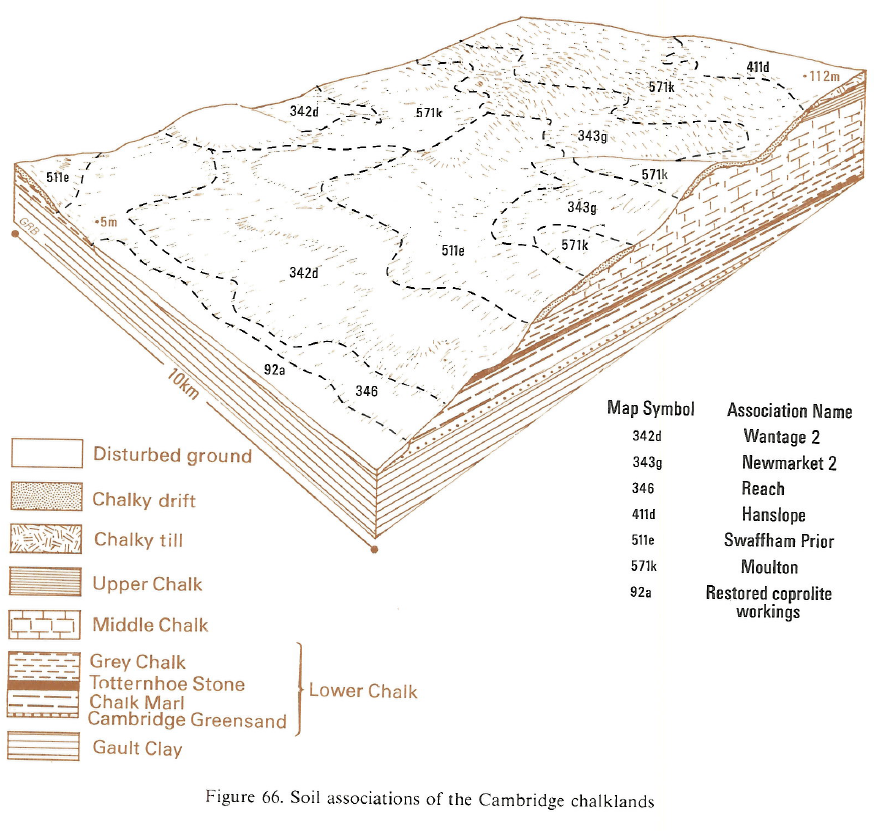 |
Eastern Region
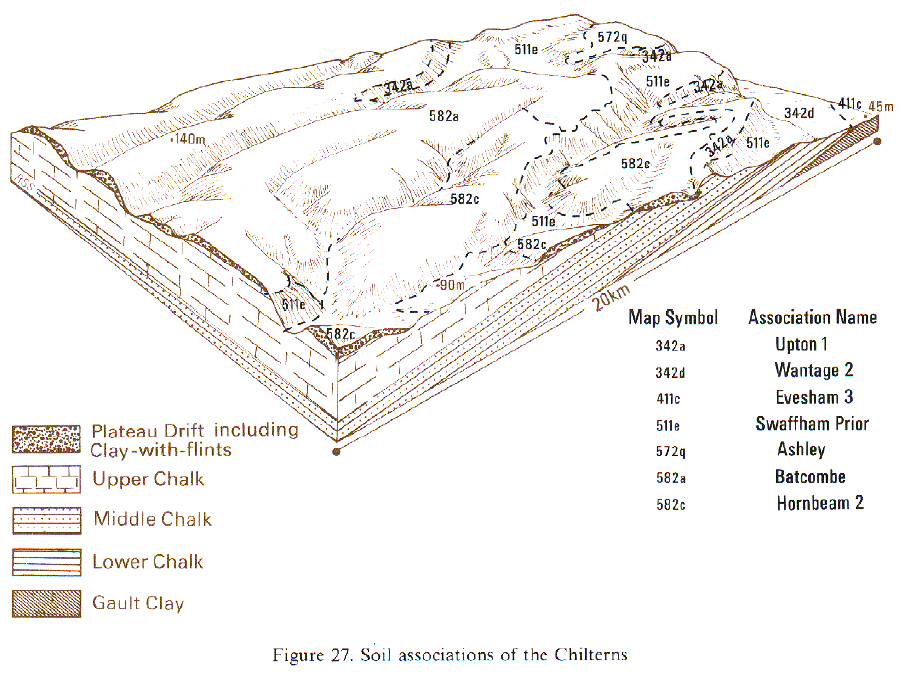 |
Eastern Region
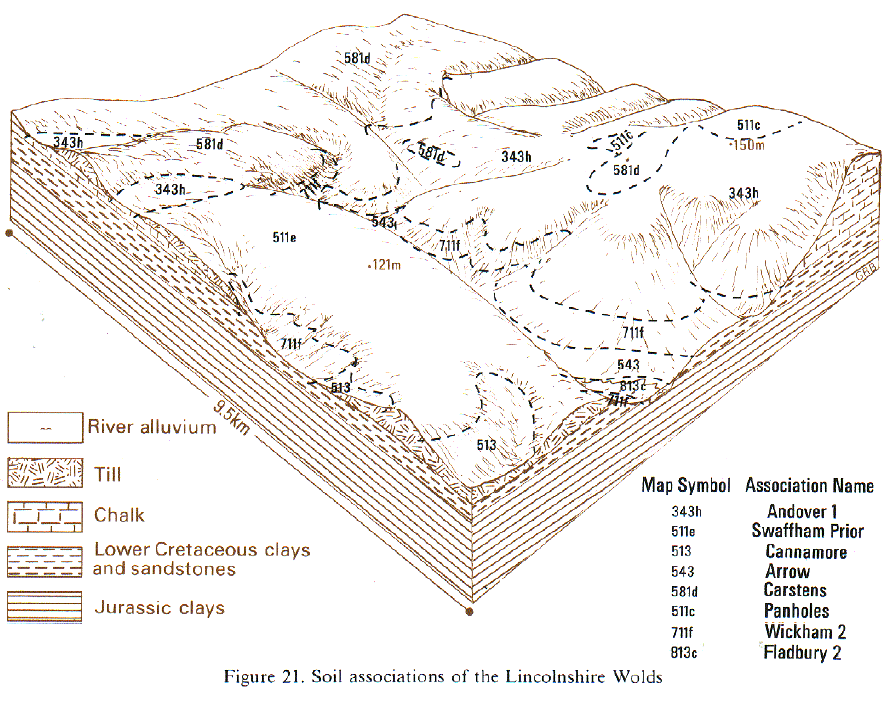 |
All information Copyright, Cranfield University © 2025
Citation: To use information from this web resource in your work, please cite this as follows:
Cranfield University 2025. The Soils Guide. Available: www.landis.org.uk. Cranfield University, UK. Last accessed 25/04/2025
